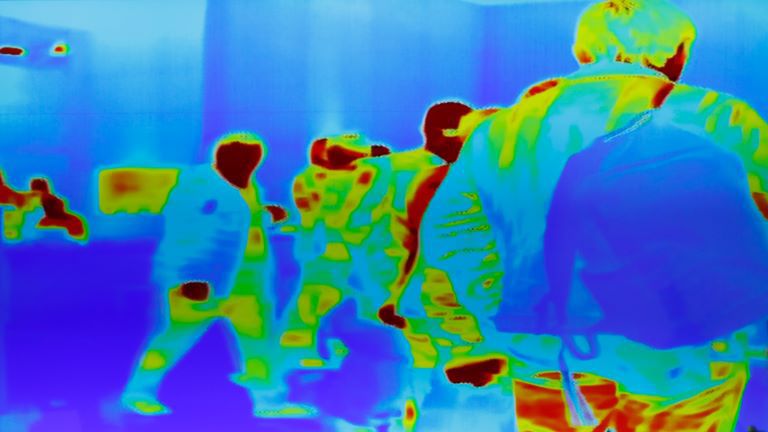Putting the smarts into building automation

Buildings have been under some form of centralized control for decades, most recently through building management systems that handle functions such as heating, ventilation and air conditioning (HVAC), and lighting systems.
However, the rapid increase in the availability of internet of things (IoT) devices, wireless networking and new sensing technologies is making it possible to augment today’s building management systems to enable safer, more comfortable and more efficient environments.
Supply and demand
The availability of enabling technology creates the opportunity but doesn't make the argument for smart building automation. On the demand side, buildings are now used in more complex and rapidly changing ways, and tenants have more challenging requirements. Some building management systems may have limited capacity to, for example, manage a whole building so that individual rooms or zones can have their own climates. They may lack the capacity to handle additional sensor inputs and the more complex management tasks needed in modern buildings. And they may be unable to provide comprehensive data feeds that act as the basis for sophisticated current and predictive usage analyses.
Expanding such systems, especially if they rely on wired sensing and actuation signals to enable more granular control, can be costly and time-consuming. Such systems may be unable to extract other important forms of data, like localized energy usage, making it difficult to recognize anomalies. Current building management systems also don't always integrate well with parallel systems, including security and fire-safety controllers, making it more difficult for managers to get a holistic view of their building's operations.
Enabling technologies
Several key technologies enable smart building automation which aims to address many of these issues. These technologies include more open networking strategies to allow greater integration and information exchange between smart building automation and legacy management systems. Smart buildings are also gaining more comprehensive networking facilities using a mix of wired Ethernet (sometimes using Power over Ethernet options to energize remote devices), WiFi, 5G in advanced implementations and even Bluetooth beaconing technology to allow for in-building asset tracking.
Another key enabler of smart building automation is the availability of battery-powered IoT sensors. These can be widely distributed to take over traditionally wired functionality such as thermostats and room-occupancy sensors for more granular environmental control. The fact that wireless IoT sensors can be physically autonomous also opens up new sensing applications. These may include reporting usage figures from electricity, gas or water meters on individual pieces of equipment; acting as light sensors so that room lighting dims when ambient light is available; and as water-spillage detectors so that plant-room issues receive attention before they become crises. Some building automation advocates also suggest using wireless sensors to track building conditions. By sensing factors such as humidity, vibration and even crack propagation, comprehensive monitoring supports the development of effective preventive maintenance strategies.
The pandemic: an example
Many of the arguments for smart building automation become crystalized as workers return to the office following the relaxation of pandemic restrictions in some locales.
Before the pandemic, it was good customer service for building managers to keep their occupants happy by ensuring their rooms were at the right temperature, humidity and lighting levels. Now, they know that tenants will demand good ventilation and air quality.
With smart building automation, it's a quick fix to introduce wireless CO2 sensors throughout a facility. These are useful because there is some evidence that CO2 concentrations affect mood and alertness.
The flipside of this kind of localized analysis and action is the way that smart building automation enables macro-level analysis and action.
Infrared cameras can track how people move through a building and highlight those with high temperatures.
With the right sensors, managers can track how a building is used and therefore know where to concentrate their day-to-day cleaning efforts. With this data in mind, managers can influence that people move through a building to minimize their interactions, using the rapid feedback such systems provide to experiment before settling on the most effective solution.
This kind of analysis and mitigation effort may help building managers show that they did their best to protect occupants from potential health issues.
New revenue streams
Analyzing data streams may also reveal insights that can enable new revenue streams. For example, companies renting office space may want to better understand the efficiency of those spaces, so that they can reconfigure their working patterns and update their office layouts. Retailers may value regular, detailed analyses of how customers move through their stores. Lessors can create service innovations, such as offering regular analyses of occupancy patterns, traffic flow and optimization strategies based on this data.
The central role that a building management system plays in the efficient operation of a facility tends to mean that it remains static after installation. As building use starts to change and users start demanding more from their work, leisure and retail environments, building management systems alone may lack the flexibility to keep up.
Smart building automation, based on ubiquitous networking, distributed IoT sensors and real-time analytics, can provide the insights needed to bridge the gap between users’ ambitions for their environments and building managers’ ability to deliver them.

Sign up for the Avnet Silica Newsletter!
Stay up-to-date with latest news on products, training opportunities and more!

Take a DEEP look into the future!
Get the latest market trends and in-depth trainings on our Digital Event Experience Portal!




